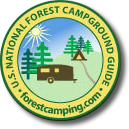Tips for Safe RVing
These tips for safe RVing come from our years of driving travel trailers and motorhome from here to there and various readings on the internet and in “how-to” RV (recreational vehicle) books.
The most important tip we can give is to be well-rested before you get behind the wheel of your rig. If you feel tried, find your mind wandering, or eyelids start to droop, pull over! Stop!!! Hand the steering wheel over to your navigator, go for a walk, or simply take a nap. Trust me – getting to your destination late and safely beats the alternative. Tips to improve driving skills, before you hit the road, on the road, once you reach your destination, and keep on RVing will follow in additional postings.
Driving skills improve with practice (These tips are for the new RV driver but are good for experienced RVers to review):
- Find a quiet flat road and floor the accelerator, performing a “maximum” start. This will tell you how much time and space you will need to merge into highway traffic.
- Same quiet flat road, traveling at a “safe and normal” speed, stomp on the brakes, performing a “panic” stop. Do this a couple of times. Now you have an idea of the distance it takes for your rig to come to a stop.
- Done practicing starting and stopping, do some shoulder driving. Slow down to a safe speed and pull off onto a gravel shoulder. Drive along for a minute and pull back onto the paved roadway (be sure to check your mirrors before merging) a couple of times. This will give you an idea of how your rig reacts to loose gravel.
- Now, find a deserted parking lot and do some turning to learning what is your turning radius. You can practice stopping and starting here, too. But perhaps the most important practice exercise for a deserted parking lot is backing up. It can be done solo but requires a lot of getting out and back in your rig. Best method is the two party (as in husband and wife) system but requires practicing communicating. Use clearly understood signals, both verbal and hand, or a two way radio.
- Here’s a useful tip for beginners when backing up a travel trailer: Place your hand at the bottom of the steering wheel and the trailer will move in the direction your turn your hand. Example: To make your trailer move to the right, move your hand to the right.
Before you hit the road:
- After a long time of just sitting, inspect your rig’s brakes, tires, fluids, and lights as well as testing its electric systems to insure everything is working properly. Make sure your hot water heater, refrigerator, and furnace ignite properly.
- Don’t over look your tires. Check the air pressure, wear patterns, and conditions of the tire’s side-wall. Unfortunately, whether you spend only a few weeks on the road or all year, RV tires have a “life” of five years after the date of manufacture. After that time period, even a tire that looks good can fail.
- Check that hitch and coupling system are in proper working order (no frayed wires, cables aren’t cracked, etc.)
- Sit in the driver’s seat and adjust the mirrors and seat for optimal views and comfort.
- Don’t forget to wear seat-belts – both you and passengers. If Fido or Fluffy is going, make sure they have a safe and secure place.
On the Road:
- RV driving skills do improve with practice. And back-up will improve with the communication between two people.
- Each day, before starting out, check fluids, brakes and tires, adjust mirrors, check hitch and coupling system and lights, especially turn brake and signals.
- Allow more time and space for everything. No recreational vehicle turns or stops on a dime and it does take up more space when changing lanes and merging.
- Do a “walk-around” before starting your day’s drive and at every stop. Sense heat and note smells, as well as, noting tire conditions.
- Study your route – knowing the route is essential.
- Know your personal limitations. There are aids to help us adapt to our limitations. A great place for suggestions and to find what might work and where to get it is www.rv.net.
- Always signal your intentions. And acknowledge signals from others. One useful signal truckers use is a quick double flash of high beam lights to tell the passing vehicle they have enough room to pull in front of you safely.
- Expect the unexpected – watch what’s going on quarter mile ahead of you.
- Trucks have blind spots and so do you. Try to maximize your field of view but also be aware of your blind spots.
- To reduce wear-and-tear on your rig, as well as your patience and marriage, avoid crowded, slow moving, rush hour traffic.
- Take a tip from truck drivers and come down a mountain in the same gear and same speed as you did going up. Use your brakes sparingly, they could overheat and fail, and use your transmission’s lower gears to get off the mountain safely.
- Listen to local radio stations for traffic slow downs, accidents, weather conditions, road conditions, etc. With advance notice, your navigator and trusted map might be able to find an alternative route.
- Even if you never need it, roadside assistance is great.
Tips for once you get there:
- Back up carefully.
- Look for a campsite that has trees or shrubbery to the north and west – this provides shelter against the wind.
- Inspect the area for poison ivy or oak and any bee/wasp/ant nests.
- Arrive at campground a few hours before sunrise.
- Use nontoxic cleaning supplies and tank additives.
- Leave campground’s showers, dump stations, and campsite clean.
- Take a walk, meet fellow RVers, or discover something special about where you are like a noteworthy café or a historic movie house.
- Is the interior road wide enough for backing up? Look for roadside tres that might restrict your turning radius when backing up. And, look for those boulders at the corners of parking aprons. Talk about ripping out septic systems – WHEW!
Tips to keep on RV-ing:
- Retain your fitness. • Maintain your flexibility, especially in your neck and shoulders. Before you start out each day, and at each rest stop if necessary, slowly turn your head as far as you can to one side and hold there for 10 seconds. Return to the center and then turn your head the other direction and again hold for 10 seconds. Repeat this sequence three to five times. Now, looking straight ahead, slowly roll your shoulders clockwise five times then counter-clockwise five times. • Maintain your strength in hands, arms, and legs to help reaction time. It’s easy. First, get a tennis ball and just squeeze it for a minute or more. Next, go for a walk. Walk, at a comfortable pace, about 30 minutes a day.
- Keep your rig fit and ready to go. If it needs fixing, get it fixed. And you don’t have to wait until you get to a major city. Most small towns have a pool of amazing mechanics. Just ask the campground’s manager for suggestions.
- Be on the outlook for “add-ons” that enhance your comfort and safety. Things like oversize mirrors, a handle to grab when getting into your rig, and a ribbon tied to the seat beat so you don’t have to twist around for your seat belt are just a few that come to mind. A GPS navigation system, rearview camera, and an adaptive cruise control, the kind that senses the distance to other vehicles and automatically adjusts speed, are three “add-ons” to dream about.
RV-ing is a wonderful way of life-style. Whether you do it for a couple of weeks or for a number months, the mobility an recreational vehicle offers is habit-forming.




